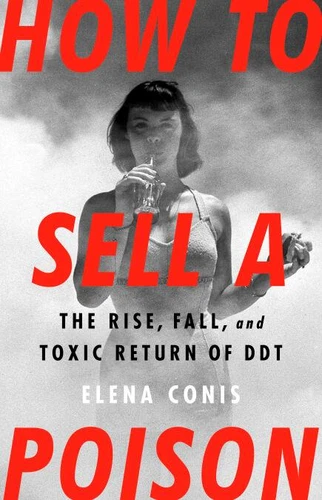How to Sell a Poison. The Rise, Fall, and Toxic Return of DDT
Par :Formats :
Disponible dans votre compte client Decitre ou Furet du Nord dès validation de votre commande. Le format ePub protégé est :
- Compatible avec une lecture sur My Vivlio (smartphone, tablette, ordinateur)
- Compatible avec une lecture sur liseuses Vivlio
- Pour les liseuses autres que Vivlio, vous devez utiliser le logiciel Adobe Digital Edition. Non compatible avec la lecture sur les liseuses Kindle, Remarkable et Sony
- Non compatible avec un achat hors France métropolitaine
 , qui est-ce ?
, qui est-ce ?Notre partenaire de plateforme de lecture numérique où vous retrouverez l'ensemble de vos ebooks gratuitement
Pour en savoir plus sur nos ebooks, consultez notre aide en ligne ici
- Nombre de pages400
- FormatePub
- ISBN978-1-64503-675-3
- EAN9781645036753
- Date de parution14/03/2022
- Protection num.Adobe DRM
- Infos supplémentairesepub
- ÉditeurBold Type Books
Résumé
The story of an infamous poison that left toxic bodies and decimated wildlife in its wake is also a cautionary tale about how corporations stoke the flames of science denialism for profit. The chemical compound DDT first earned fame during World War II by wiping out insects that caused disease and boosting Allied forces to victory. Americans granted it a hero's homecoming, spraying it on everything from crops and livestock to cupboards and curtains.
Then, in 1972, it was banned in the US. But decades after that, a cry arose to demand its return. This is the sweeping narrative of generations of Americans who struggled to make sense of the notorious chemical's risks and benefits. Historian Elena Conis follows DDT from postwar farms, factories, and suburban enclaves to the floors of Congress and tony social clubs, where industry barons met with Madison Avenue brain trusts to figure out how to sell the idea that a little poison in our food and bodies was nothing to worry about.
In an age of spreading misinformation on issues including pesticides, vaccines, and climate change, Conis shows that we need new ways of communicating about science-as a constantly evolving discipline, not an immutable collection of facts-before it's too late.
Then, in 1972, it was banned in the US. But decades after that, a cry arose to demand its return. This is the sweeping narrative of generations of Americans who struggled to make sense of the notorious chemical's risks and benefits. Historian Elena Conis follows DDT from postwar farms, factories, and suburban enclaves to the floors of Congress and tony social clubs, where industry barons met with Madison Avenue brain trusts to figure out how to sell the idea that a little poison in our food and bodies was nothing to worry about.
In an age of spreading misinformation on issues including pesticides, vaccines, and climate change, Conis shows that we need new ways of communicating about science-as a constantly evolving discipline, not an immutable collection of facts-before it's too late.
The story of an infamous poison that left toxic bodies and decimated wildlife in its wake is also a cautionary tale about how corporations stoke the flames of science denialism for profit. The chemical compound DDT first earned fame during World War II by wiping out insects that caused disease and boosting Allied forces to victory. Americans granted it a hero's homecoming, spraying it on everything from crops and livestock to cupboards and curtains.
Then, in 1972, it was banned in the US. But decades after that, a cry arose to demand its return. This is the sweeping narrative of generations of Americans who struggled to make sense of the notorious chemical's risks and benefits. Historian Elena Conis follows DDT from postwar farms, factories, and suburban enclaves to the floors of Congress and tony social clubs, where industry barons met with Madison Avenue brain trusts to figure out how to sell the idea that a little poison in our food and bodies was nothing to worry about.
In an age of spreading misinformation on issues including pesticides, vaccines, and climate change, Conis shows that we need new ways of communicating about science-as a constantly evolving discipline, not an immutable collection of facts-before it's too late.
Then, in 1972, it was banned in the US. But decades after that, a cry arose to demand its return. This is the sweeping narrative of generations of Americans who struggled to make sense of the notorious chemical's risks and benefits. Historian Elena Conis follows DDT from postwar farms, factories, and suburban enclaves to the floors of Congress and tony social clubs, where industry barons met with Madison Avenue brain trusts to figure out how to sell the idea that a little poison in our food and bodies was nothing to worry about.
In an age of spreading misinformation on issues including pesticides, vaccines, and climate change, Conis shows that we need new ways of communicating about science-as a constantly evolving discipline, not an immutable collection of facts-before it's too late.



